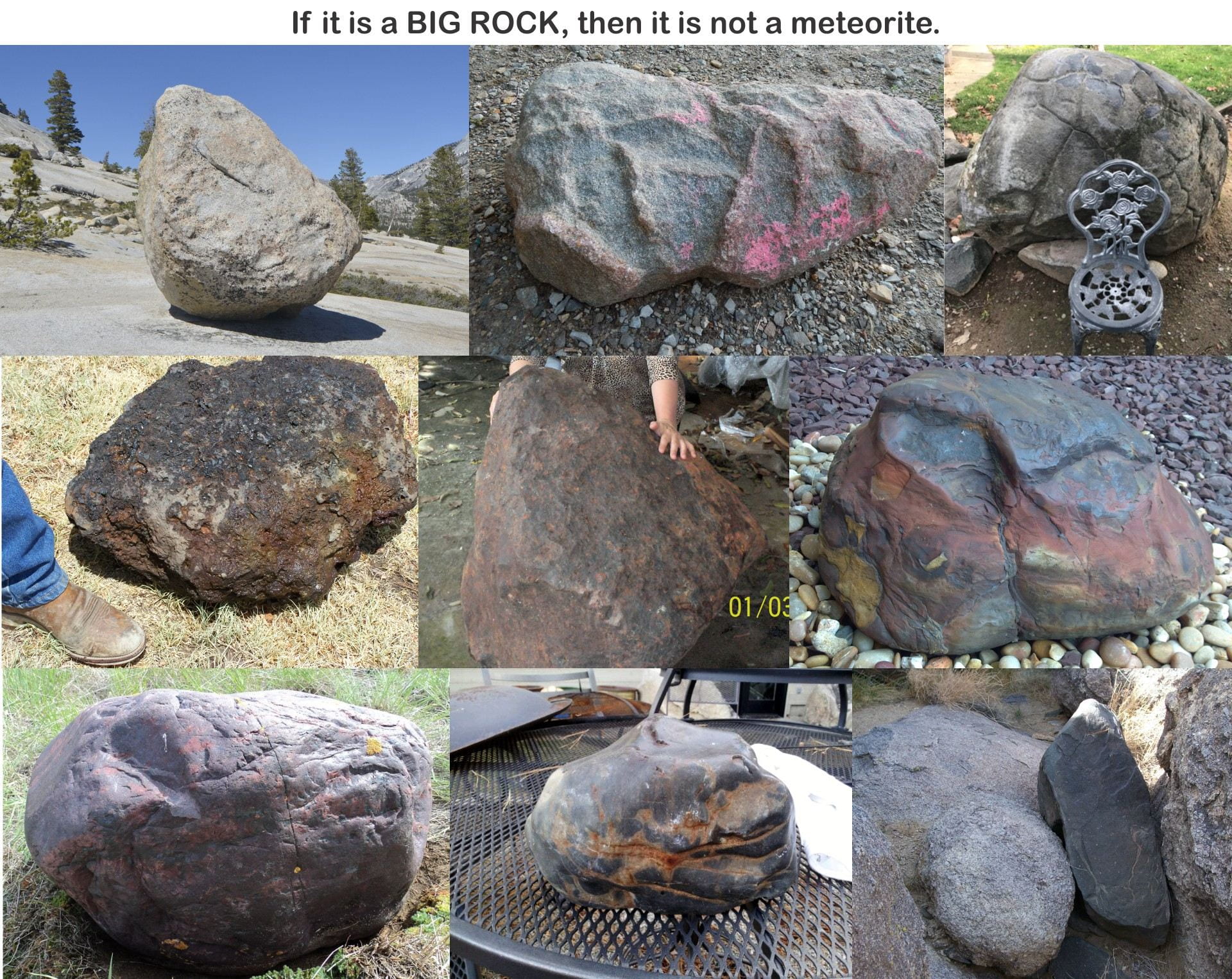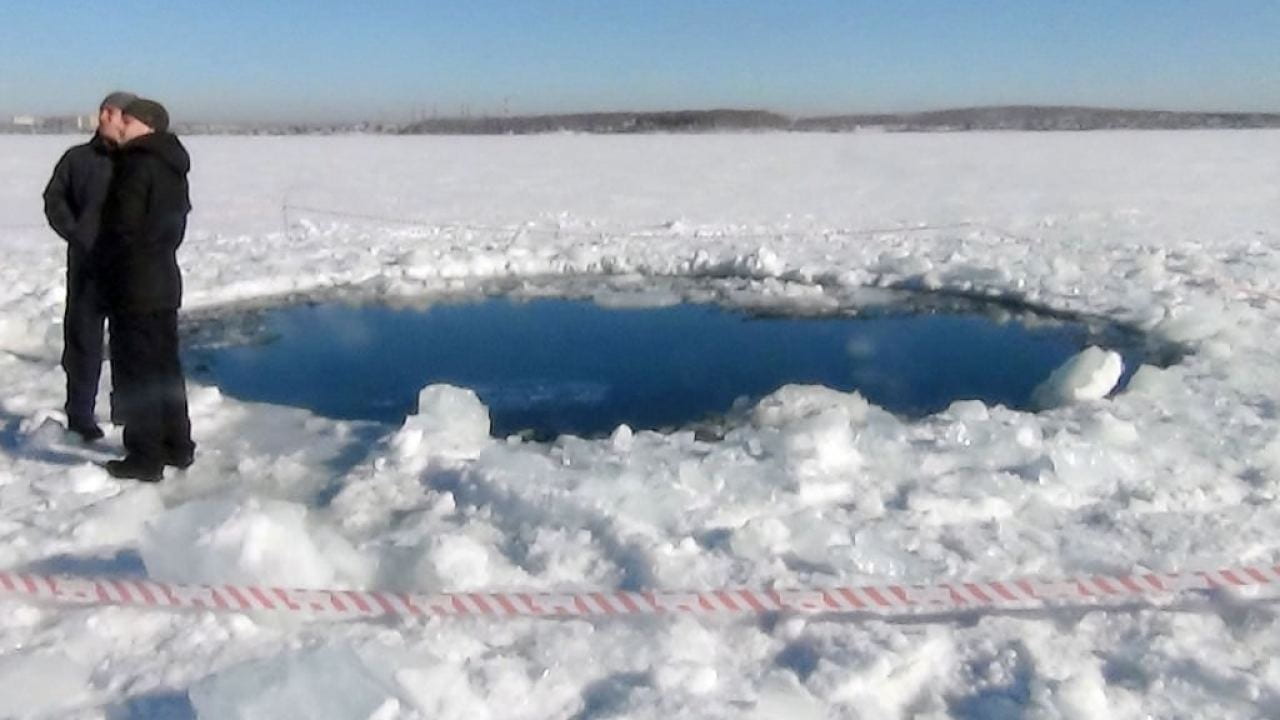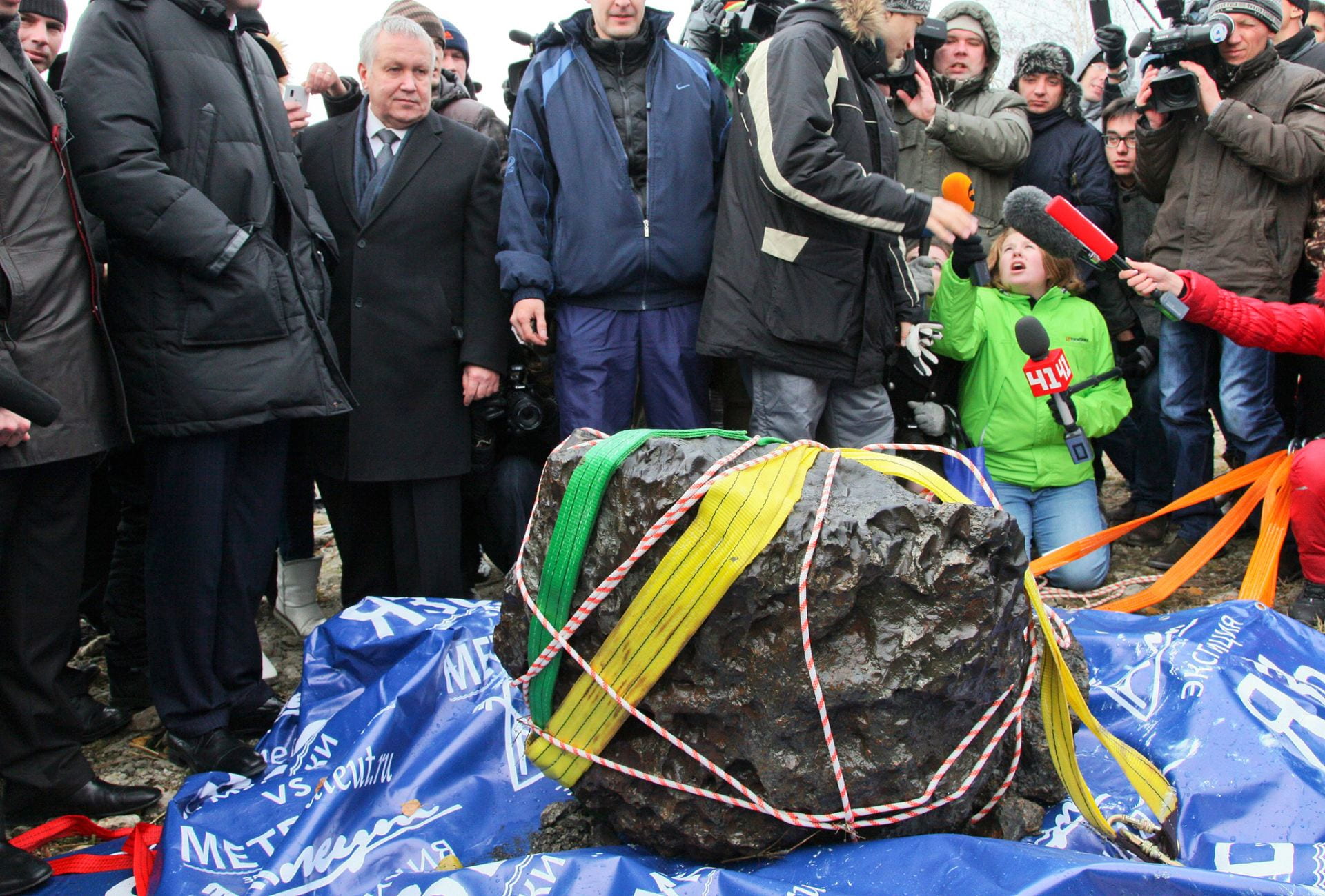If it is a big rock, then it is not a meteorite
Meteorites are smaller than most people think. The typical size for a stony meteorite is 1-3″ (2-6 cm) in diameter. 90% are less than 5.5″ (14 cm). Most of the rocks in the photos below are glacial erratics – they came from “above” but only because the ice beneath them melted.
Nearly all of the photos below were sent to me by persons who thought the rock might be a meteorite. Note that none of these rocks has a fusion crust.




Here is a big stony meteorite, Chelyabinsk, but note the hundreds of small stones.
From the Meteoritical Bulletin
Chelyabinsk
54°49’N, 61°07’E (approximate centroid)
Chelyabinskaya oblast’, Russia
Fell: 15 Feb 2013; 3:22 UT
Classification: Ordinary chondrite (LL5)
History: At 9:22 a.m. (local time) on February 15, 2013, a bright fireball was seen by numerous residents in parts of the Kurgan, Tyumen, Ekaterinburg and Chelyabinsk districts. Images of the fireball were captured by many video cameras, especially in Chelyabinsk. Residents of the Chelyabinsk district heard the sound of a large explosion. The impact wave destroyed many windows in Chelyabinsk and surrounding cities. Many people were wounded by glass fragments. A part of the roof and a wall of a zinc plant and a stadium in Chelyabinsk were also damaged. Numerous (thousands) stones fell as a shower around Pervomaiskoe, Deputatsky and Yemanzhelinka villages ~40 km S of Chelyabinsk. The meteorite pieces were recovered and collected out of snow by local people immediately after the explosion. The snow cover was about 0.7 m deep. The falling stones formed holes surrounded by firm snow. Largest stones reached the frozen soil. A stone may have broken the ice of Chebarkul Lake, located 70 km W of Chelyabinsk. Small meteorite fragments were found around the 8 m hole in the ice but divers did not find any stones on the lake bottom.
Classification: Ordinary chondrite (LL5), shock stage S4, weathering W0.
Specimens: About 400 stones weighing 3.5 kg in total and a few thin sections are in Vernad.
Chelyabinsk, recovery of additional masses
The main mass of the Chelyabinsk meteorite fell into Chebarkul lake and broke the ice, forming a 7 m hole (54°57’33.74″N, 60°19’19.58″E). Numerous small fragments (0.5 to 1 g) were scattered around the hole on the snowy ice. 5 kg of meteorite samples were recovered from the lake bottom using magnets during the first month after the meteorite fell. Additionally, ~10 kg of meteorite fragments were recovered by local residents in the same way, but were not well documented. Underwater recovery operations between Sept. 5 and Oct. 16, 2013, retrieved eight additional meteorite fragments: the largest sample weighed ~540 kg, and the other seven fragments totaled 84.4 kg. The total mass of meteorite pieces recovered from the bottom of Chebarkul lake was therefore ~640 kg. Hence the total estimated mass of Chelyabinsk meteorite fragments recovered from the lake and collected in the strewn field on land is ~1000 kg.
Submitted by A. V. Kocherov (Chelyabinsk State University, Chelyabinsk, Russia), M. A. Ivanova (Vernad).





More small Chelyabinsk: Meteorite Picture of the Day